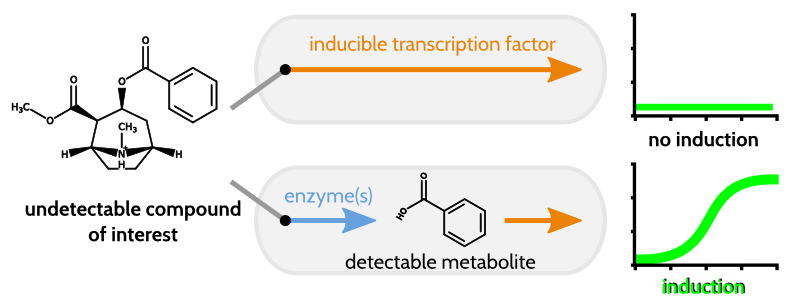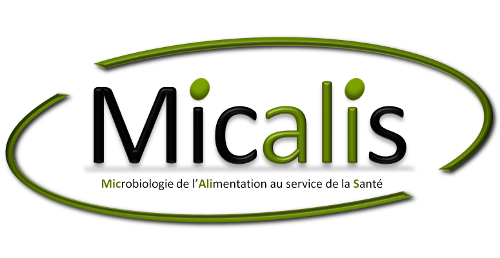Expanding Biosensing Abilities through Computer-Aided Design of Metabolic Pathways, ACS Synthetic Biology
 Detection of chemical signals is critical for cells in nature as well as in synthetic biology, where they serve as inputs for designer circuits. Important progress has been made in the design of signal processing circuits triggering complex biological behaviors, but the range of small molecules recognized by sensors as inputs is limited. The ability to detect new molecules will increase the number of synthetic biology applications, but direct engineering of tailor-made sensors takes time.
Detection of chemical signals is critical for cells in nature as well as in synthetic biology, where they serve as inputs for designer circuits. Important progress has been made in the design of signal processing circuits triggering complex biological behaviors, but the range of small molecules recognized by sensors as inputs is limited. The ability to detect new molecules will increase the number of synthetic biology applications, but direct engineering of tailor-made sensors takes time.
Here we describe a way to immediately expand the range of biologically detectable molecules by systematically designing metabolic pathways that transform nondetectable molecules into molecules for which sensors already exist. We leveraged computer-aided design to predict such sensing-enabling metabolic pathways, and we built several new whole-cell biosensors for molecules such as cocaine, parathion, hippuric acid, and nitroglycerin.
Libis, V., Delépine, B., Faulon, J.L. Expanding biosensing abilities through computer-aided design of metabolic pathways. ACS Synthetic Bioliology, in press, 2016. | doi: 10.1021/acssynbio.5b00225 | PMID: 27028723



